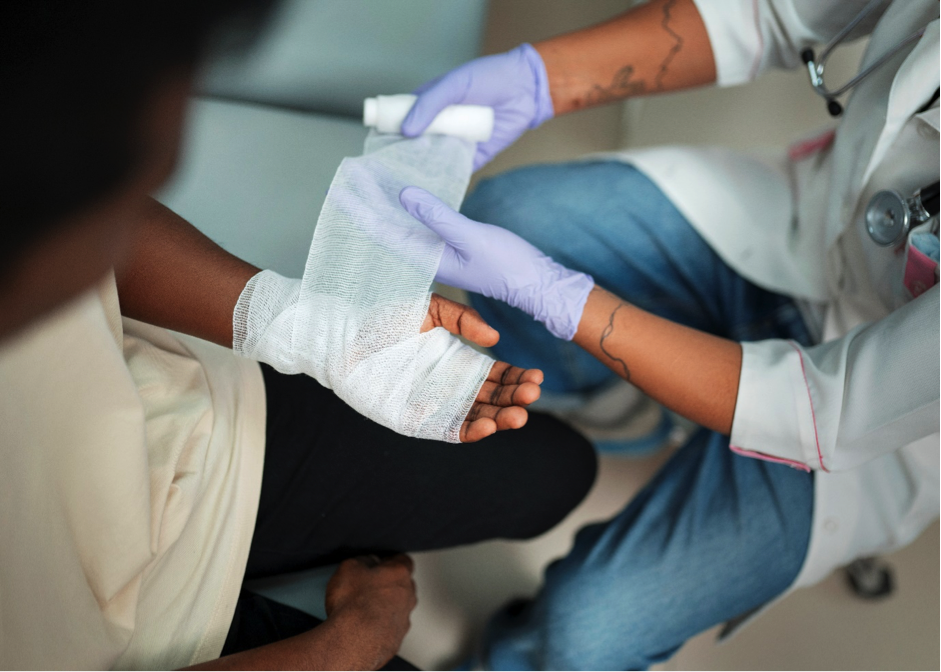
Your Health Magazine
4201 Northview Drive
Suite #102
Bowie, MD 20716
301-805-6805

More Legal and Health Articles
Steps You Should Never Skip After a Burn Accident

Los Angeles is known for its fast-paced life, but accidents like burns—from kitchen spills to electrical mishaps—can happen instantly. These injuries range from minor to life-threatening, and how you respond immediately can mean the difference between quick healing and lasting damage.
We’ve seen how skipping steps worsens pain or leads to costly complications. In severe cases, like workplace or negligence-related burns, consulting a professional about a lawsuit for burn injury in Los Angeles may be necessary. Here are the critical steps to never ignore.
Assess the Severity of the Burn
Before doing anything else, you need to determine the severity of the burn injury. Burns are grouped into three types.
A first-degree burn affects only the top layer of skin. It’s red, dry, and painful, like a sunburn. A second-degree burn damages deeper skin layers. It may blister and look wet or swollen.
A third-degree burn destroys all skin layers. The area may look white, brown, or black, and might not hurt because of nerve damage.
Seek emergency help if you notice:
- Burns on the face, hands, feet, or genitals
- Burns that cover a large area
- Trouble breathing or signs of smoke inhalation
- Charring or numbness
- A burn caused by chemicals or electricity
Remove the Source of the Burn Safely
Once it’s safe, you must stop whatever is still burning the skin. Leaving the source in contact even for seconds can make things worse.
Don’t try to pull off clothing stuck to the burn—this can cause more damage.
Follow these tips depending on the source:
- Heat: Move away from flames or hot surfaces
- Chemicals: Rinse with cool water; check the label for safety steps
- Electricity: Turn off the power before touching the person or object
Cool the Burn Properly
The sooner you cool the burn, the better. Run cool (not cold) water over the area for 10 to 20 minutes. This helps stop the burning process and limits damage to the skin.
Never use ice, butter, toothpaste, or creams. These can trap heat or irritate the skin, making the injury worse. Acting quickly can ease pain, prevent further harm, and improve healing, especially during the first few critical minutes.
Protect the Burned Area
After cooling, you should cover the burn with a clean, non-stick bandage or a sterile cloth. This protects the skin from dirt and bacteria. Keeping the area clean lowers the risk of infection.
Don’t pop any blisters—they help shield the wound while it heals. And skip home remedies like oils or powders, which can do more harm than good.
Seek Appropriate Medical Attention
Some burns need immediate medical help. You should immediately seek emergency care if the burn is deep, the person has trouble breathing, or shows signs of shock like dizziness or confusion.
Even minor burns, especially those on joints, the face, hands, feet, or genitals, should be checked by a doctor. They can assess the burn’s severity and help prevent complications. Also, a doctor can check if a tetanus shot is needed, as burns can increase the risk of this serious infection.
Monitor for Signs of Infection and Delayed Complications
Watch for red streaks, swelling, pus, or fever—these scream infection. Slow-healing burns or ones that stay painfully tight need a doctor’s eye. Deep burns can lead to long-term scarring or trouble moving the area. Don’t ignore these changes—early treatment helps prevent permanent damage.
Don’t Overlook the Psychological Impact
Severe burns—especially visible ones—can leave emotional scars, too. Anxiety, flashbacks, or self-consciousness are common. Healing isn’t just skin-deep; mental health support matters as much as bandages.
Understanding Legal Steps After a Burn Injury
Once medical care is handled, the next step may involve understanding your legal rights, especially if someone else’s negligence caused the burn. This could include workplace accidents, faulty products, or unsafe property conditions.
Here’s what you should keep in mind:
- Document everything: Medical records, injury photos, and witness statements can support a claim.
- Report the incident: If the burn happened at work, file a report with your employer. For other cases, notify the property owner or the appropriate authority.
- Know the timeline: Every state has a time limit—called a statute of limitations—for filing personal injury claims.
- Consult a professional: A legal expert can help explain whether you have a strong case and what compensation might cover, such as medical bills, lost wages, or pain and suffering.
Taking legal action isn’t just about money. It’s often about holding someone accountable and preventing future harm to others.
Other Articles You May Find of Interest...
- How PTSD After a Crash Can Affect Your Life
- Steps to Take if Pain Appears Days or Weeks After an Accident
- How Does a Burn Injury Affect Your Life?
- What Evidence Is Needed for a Talcum Powder Lawsuit?
- How Life Care Planning Supports Long-Term Recovery
- Why Hire a Martinsville Auto Accident Attorney for Whiplash from a Rear-End Crash?
- Negotiating with Insurance: Tactics They Use to Deny Injury Claims














